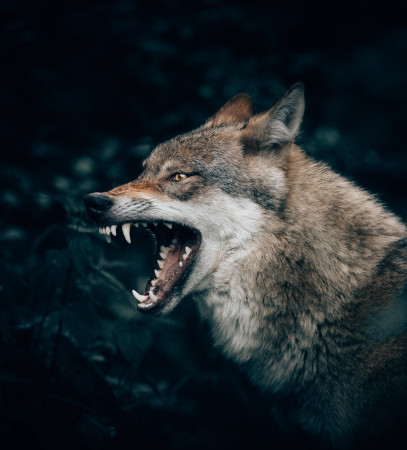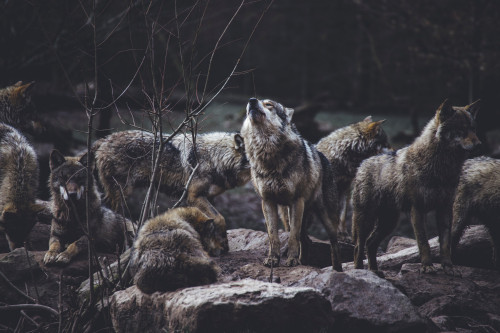Myths and Legends of Werewolves have been popular throughout their history, not only as a source of inspiration for writers of fiction but as the fiery spark of terror that haunts the dreams of those who believe–their origin story from Petronius Arbiter’s The Satyricon has been built upon for almost two millennia has resulted in an enthusiastic following in the last century. Within medieval folklore, there are numerous tales of villages in rural areas being ripped apart by werewolves–uncontrollable beasts with blood-lust and an insatiable appetite for human flesh. By day the only evidence of their existence would be dead bodies, bloodied and torn by enormous claws, and a trail of bloody paw prints that marked their presence. As noted by Petronius and a plethora of other writers, this was centralized around the appearance of the full moon. So, while werewolves are considered exciting, dangerously fun, and possibly even a little sexy (thanks to authors like Charlaine Harris by Patricia Briggs) in today’s horror culture and paranormal fiction, they were vicious and brutal beasts that threatened the lives of villagers in the middle ages.
5 Werewolves in History
While the mythology of the Werewolf is vast, there are actually more modern historical accounts of these creatures actually existing, so we present these five Werewolves that were found throughout history.
The Beast of Gévaudan
In the former province of Gévaudan–Lozère and Haute-Loire–in the south of France, the presence of La Bête du Gévaudan terrorized the countryside beginning in 1764 and lasting until 1767. This beast was reported as a massive wolf-like creature–about the size of the cow–that had razor-sharp claws, a mouth that housed giant fangs, and reddish-brown hair. Its head and ears were said to be shaped like a greyhound’s, with a wide chest and a back streaked with black.
In May or June of 1764 was the first known encounter with the beast, where it charged a young woman tending to her cattle in the Mercoire forest in the eastern part of Gévaudan–it is said the bulls in her herd were able to keep it at bay and finally drive it off after two attempts to charge the woman, and she was able to escape with her life. What followed was a continuous onslaught of the region against what was deemed easy prey–women, children, and men who were tending to their livestock alone in secluded pastures. Unusually, it wouldn’t target the legs or throat like a wolf might, instead it went for the head; victims that were left behind partially eaten were often with their heads completely crushed or without one at all. There was such a high volume of attacks that there was suspicion of there being more than one beast, as well as a person training these creatures to do the killings–but as the attacks continued, the supernatural quality of it increased, when it was seemingly unaffected by gunshot wounds inflicted upon it by two hunters in October 1764. Having believed they had mortally wounded the beast, they followed the blood trail to the woods the next day and instead of finding the body of the wolf, they discovered freshly slaughtered victims.
Seeking the large reward that was posted for slaying the beast, soldiers and hunters traveled from far and wide to find the creature, but months passed and it was no closer to being captured or slain. After hearing of a brutal public attack of two young children, Louis XV sent a Norman squire and hunter by the name of Denneval to aid in the hunt of the beast and in February of 1765, this man began tracking it with his six best bloodhounds. He was joined by Jacques Denis, a sixteen-year-old who lost his twenty-year-old sister to the beast and sought vengeance. After hunting it for several months, Jacques was killed and Denneval retired from hunting the beast at all. The Beast continued its rampages, was shot through the eye by another hunter, fell to the ground, seemingly deceased, then rose and went for a final attack, but was met with another barrage of bullets and was at last killed. Upon examination, they determined that this beast was actually a rare wolf that was on the larger end of the reported spectrum.
This tale would seem to be fairly run of the mill in circumstances with a bloodthirsty wolf, except that after a year of peace returning to the community, in the spring of 1767 the beast was reported to have come back to life and start massacring once again. This time, they took no time assembling the largest hunting party yet, comprised of over three hundred men, as well as a man by the name of Jean Chastel; Chastel had heard rumors that the Beast of Gévaudan was actually a werewolf, so he loaded his gun with silver bullets that were blessed by a priest. Turned out that the rumors allowed him to be well-prepared, as after shooting the beast twice in the chest with these silver bullets, it was instantly killed.
During its reign of terror over the countryside of Gévaudan, it was said to kill between sixty and a hundred men, women, and children, while injuring more than thirty.
Livonia and the Hounds of God
In the late 1600s, Thiess of Kaltenbrun a man living in Jurgenburg, Livonia–what is now the Latvia and Lithuania regions–was widely believed by neighbors and peers to be a werewolf who regularly had dealings with the devil. Although it didn’t help his case that he admitted that he was one, especially during a time when an association with the devil meant a death sentence. Either way, the local authorities didn’t seem to care, since Thiess was an eighty-year-old man.
The authorities eventually had to question him on an unrelated matter in 1691, which oddly enough ended in him volunteering information about his being a werewolf. His confession to his lycanthropic lifestyle was quite strange, with no real consistency within–he said that he had stopped participating as a werewolf a decade prior, but that he and his companions would wear magical wolf pelts and turn into wolves to celebrate St. Lucia’s Day, Pentecost, and Midsummer’s Night.
His claim throughout was that werewolves were the agents of God, that they traveled to hell to battle the Devil himself and bring goods stolen by witches back to the people who lost them, but strangely also kill, cook, then eat farm animals. He also claimed that if they failed to keep the witches and demons in Hell that the community would have poor crops for the entire season. To counter the accusations that he was in league with the devil, he instead told the authorities that he and his companions were actually working for God, that they were a group of lycanthropes that were titled the “Hounds of God.” Thiess claimed that this ensured them an ascent to Heaven when they died. Eventually, when it was discovered that Thiess was not a devout Luthern and that he occasionally performed folk magic, the judge ordered Thiess to ten lashings and permanent exile.
The Wolf of Ansbach
In 1685, in what was the town of Neuses, Ansbach–now Germany–there was a wolf terrorizing and killing people; while this was not completely out of the ordinary, this particular instance coincided with the death of the cruel and unpopular chief magistrate, Michale Leicht. The people of the town believed that this wolf was Leicht who had returned from the dead as a werewolf. Once the wolf had been killed, they paraded the streets with its corpse, cut off its muzzle, then dressed in to look like Leicht, even going so far as to put a mask and a wig on it. After the parade concluded, they hung the body in a prominent position in town so that everyone could see that this creature had been killed, but eventually the wolf’s corpse was preserved and put on display at a local museum.
The Werewolf of Allariz
Manuel Blanco Romasanta, born in 1809, was thought to be Spain’s first-ever serial killer; although, there weren’t many stories other than his own to corroborate his being a werewolf. When he was accused of murder, he actually confessed to thirteen of the incidents but claimed he was cursed with Lycanthropy. When asked to display his ability to transform, he stated that he was no longer afflicted; he was eventually acquitted for four deaths, which were killed by actual wolves, but he was found guilty of the rest. Sentenced to death, but then to life in prison after being seen by a French hypnotist who believed that Romansanta was actually just delusional and had a mental illness. He passed away the same year from stomach cancer.
The Werewolf of Bedburg
Perhaps the most notorious werewolf case is that of Peter Stumpp, in Bedburg, Germany 1589; having gained his wealth as a farmer, he was accused of multiple counts of murder, cannibalism, and ultimately a werewolf. At first, thought to be the work of wolves, incidents started with the mutilated bodies of cattle, but were soon followed by townsfolk, but the creatures couldn’t be caught. In 1589, a hunting part cornered the wolf with its hounds, however, when the hunters approached they saw Peter Stumpp instead–what was more damning was that the wolf they had been hunting had had his left forepaw cut off and when they came upon Stumpp he also had his left hand cut off. After a torture-driven confession was made by Stump, he admitted that when he was twelve he had made a pact with the devil and had been given a magical wolf pelt belt which enabled him to turn into a wolf. He confessed that he had murdered and cannibalized fourteen children and two pregnant women, killing his own son, and molesting his own daughter–so Stumpp was fixed to a breaking wheel, had his flesh torn from his body with red-hot pinchers, then his limbs were broken with the blunt side of an ax so he wouldn’t rise from the grave, and he was beheaded. This is a more controversial story, as it was believed by some that he was the victim of a political witch hunt, as the Catholic church had recently seized the area and Stumpp was a Protestant convert.
How Werewolves Became So Popular
These days, it seems like werewolves in the supernatural genre are a dime-a-dozen, so it’s no big surprise that there are too many movies to list here–these are just some of our favorites, but they’re also ones that have contributed greatly to the modern lore that are currently associated to the story of the werewolf. Details change from one story to the next, but the broad picture remains the same.
Movies That Have Made Werewolves Mainstream

- The Hounds of Baskervilles (1939)
- The Wolf Man (1941)
- An American Werewolf in London (1981)
- The Howling (1981)
- Silver Bullet (1985)
- Bad Moon (1996)
- An American Werewolf in Paris (1997)
- Ginger Snaps (2000)
- Dog Soldiers (2002)
- Underworld (2003)
- Van Helsing (2004)
- Cursed (2005)
- Underworld: Evolution (2006)
- Underworld: Rise of the Lycans (2009)
- The Wolfman (2010)
- Underworld: Endless War (2011)
- Red Riding Hood (2011)
- Underworld: Awakening (2012)
- Wer (2013)
- Underworld: Blood Wars (2016)

Georgia-based author and artist, Mary has been a horror aficionado since the mid-2000s. Originally a hobby artist and writer, she found her niche in the horror industry in late 2019 and hasn’t looked back since. Mary’s evolution into a horror expert allowed her to express herself truly for the first time in her life. Now, she prides herself on indulging in the stuff of nightmares.
Mary also moonlights as a content creator across multiple social media platforms—breaking down horror tropes on YouTube, as well as playing horror games and broadcasting live digital art sessions on Twitch.


